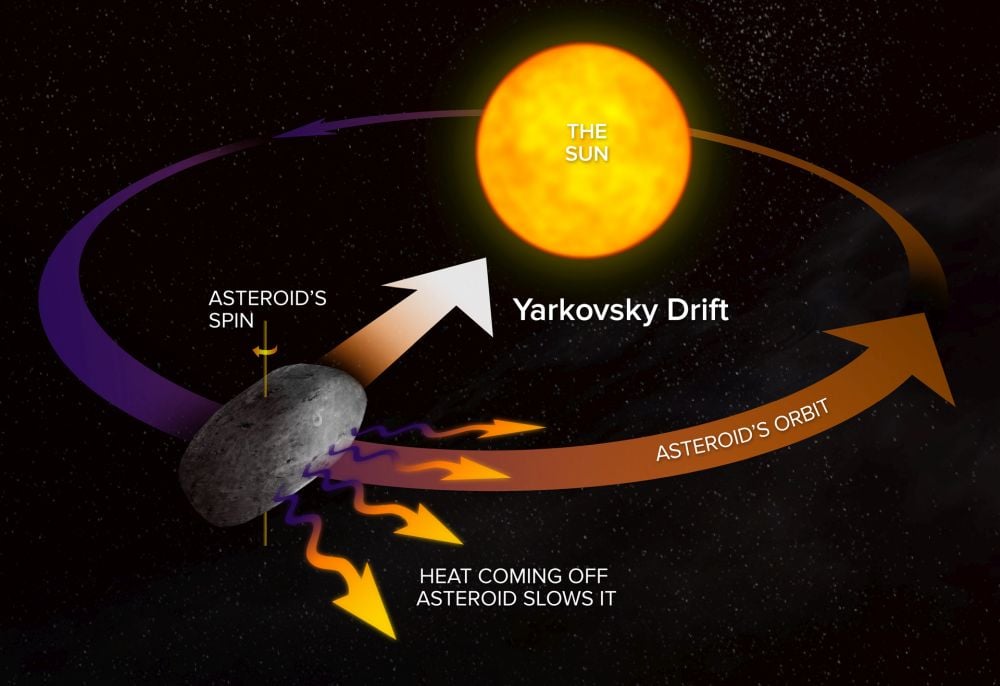We tend to think of Extraterrestrial Intelligences (ETIs)—if they exist—as civilizations that have overcome the problems that still plague us. They're advanced, peaceful, disease-free technological societies that enjoy absolute political stability and accomplish feats of impeccable engineering. Can that really be true in a Universe where entropy sets the stage upon which events unfold?
We use the Kardashev Scale to imagine how civilizations progress. Underlying the scale is an understanding that energy drives that progress. Our primitive ancestors got their energy by digging for tubers, picking fruits and nuts, and scavenging carrion. Eventually, we worked in organized groups and hunted for game. The widespread use of fire triggered progress as more nutrients became available. Then came windmills, waterwheels, and coal-burning. Now we build solar power plants, atomic fission reactors and massive hydroelectric dams.
The Kardashev Scale picks up from there, giving us a way to understand how technological civilizations might harness energy.
A Kardashev Type 1 civilization harnesses all the energy that reaches its planet from its star. A Type 2 civilization harnesses all of the energy from its star using something like a Dyson Sphere or a satellite megaswarm. A Type 3 civilization harnesses energy on a galactic scale. Some say we're at about 0.7 on the Kardashev Scale right now. The Kardashev Scale is a helpful thought experiment, but is it realistic? Are Type 2 megaswarms sustainable?
"At first glance, megaswarms may seem to be ideal passive technosignatures, eonic structures that sit invulnerable as the universe around them ages." - Brian Lacki, Breakthrough Listen Initiative.
New research by Brian Lacki, a theoretical astronomer with the Breakthrough Listen Initiative, examines the feasibility of satellite megaswarms employed by Kardashev Type 2 civilizations. It's titled "Ground to Dust: Collisional Cascades and the Fate of Kardashev II Megaswarms," and will be published in The Astrophysical Journal.
 *The Very Large Array is involved with SETI, the Search for Extraterrestrial Intelligence. Image Credit: Alex Savello/NRAO*
*The Very Large Array is involved with SETI, the Search for Extraterrestrial Intelligence. Image Credit: Alex Savello/NRAO*
Extraterrestrial intelligences are speculated to surround stars with structures to collect their energy or to signal distant observers," Lacki writes. "If they exist, these most likely are megaswarms, vast constellations of satellites (elements) in orbit around the hosts.
The engineering involved in building and maintaining such a system is mind-boggling.
Such a megaswarm would consist of millions or billions of individual elements. Potential collisions would menace the system and require an intricate guidance system that could self-correct for millennia or even longer. It would also need backup systems and fail-safe mechanisms. The danger is that once one of the elements fails, it could collide with another, triggering a cascade of collisions that could bring the entire system down.
"Although long-lived megaswarms are extremely powerful technosignatures, they are liable to be subject to collisional cascades once guidance systems start failing," Lacki writes.
Lacki calculated the collision time for such a swarm as "roughly an orbital period divided by the covering fraction of the swarm." He says that structuring the swarm differently can change collision velocities, but collisions are a certainty once any randomness appears in the orbits of the elements.
He also says that "... once the collisional cascade begins, it can develop extremely rapidly for hypervelocity collisions."
Multiple natural forces can perturb orbiting bodies, including the Lidov-Kozai effect. It's a dynamic phenomenon in three-body systems, where a distant third body causes perturbations in a binary system. In a megaswarm, the three bodies could be the star, the swarm, and a planet, or they could be a binary star and the megaswarm. In either case, the effect produces orbital irregularities that must be continuously monitored and corrected.
The Lidov-Kozai effect creates a situation where "... an initially circular orbit at high inclination cycles into a highly eccentric orbit at low inclination and back." These deviations cause trouble. "This is highly relevant for megaswarm survival, because, unless elements at different inclinations start with extremely well-separated semimajor axes, elements originally at high inclinations end up in the equatorial plane, colliding with the elements orbiting there at high speed," Lacki explains.
That means a large enough perturbing body can rapidly destroy the megaswarm and inhibit the system's ability to harness energy. In our Solar System, Jupiter is a major perturber that could destabilize the system in a few million years. In binary star systems, the megaswarm could be stabilized into a collisional cascade in only a few thousand years. Those may sound like long timescales, but they're not for a Type 2 civilization.
Another problem for megaswarms is the Yarkovsky Effect. It affects rotating bodies as solar photons strike different parts of their surface in different amounts. This creates subtle differences in the way an object absorbs and radiates heat. As it re-radiates the heat, it emits photons that generate a tiny amount of thrust. Over time, this can change the motion of an object through space. All elements in a megaswarm are subject to this effect, meaning perturbations are certain.
 *The Yarkovsky Effect means elements in a megaswarm will either speed up or slow down. Over time, this changes their orbits. Image Credit: A. Angelich, NRAO/AUI/NSF*
*The Yarkovsky Effect means elements in a megaswarm will either speed up or slow down. Over time, this changes their orbits. Image Credit: A. Angelich, NRAO/AUI/NSF*
There are other problems with megaswarms that stem from the star itself.
Stars aren't absolute spheres. Their rotation makes them oblate spheroids. That means they have a non-spherical gravitational field that creates gravitational variations in the region where the megaswarm orbits. That has to be accounted for and corrected, especially over extremely long periods as a star ages. There's also solar weather and solar wind to contend with, as well as coronal mass ejections that can strike megaswarm elements.
For these reasons and others outlined in his paper, Lacki writes, "Most megaswarms are thus likely to be short-lived on cosmic timescales without active upkeep."
At first glance, megaswarms may seem to be ideal passive technosignatures, eonic structures that sit invulnerable as the universe around them ages," Lacki writes in his conclusion. "Unless the megaswarm is actively maintained, gravitational and radiative perturbations cause precession and, in some cases, eccentricity growth. These cause the belts to puff out and overlap, allowing for collisions of elements both within and between belts.
However, active upkeep over long periods introduces political problems. What does political discourse look like when an entire civilization relies on one enormous, overbearing engineering project? Can a civilization remain unified and coherent for such long periods? If our incessant, internecine squabbling is any indication, they may be unable to stay unified.
What about renegade political or religious movements? What about terrorism? Will advanced civilizations eliminate these threats? Who knows? Who knows if any civilizations can even survive the Great Filter?
The destruction wrought by collisional cascades is a general property of orbital swarms, no matter the scale," Lacki concludes. "They then must either coordinate and regulate these commons, work without cease to repair what they have built, or let it all be ground to dust.
 Universe Today
Universe Today
